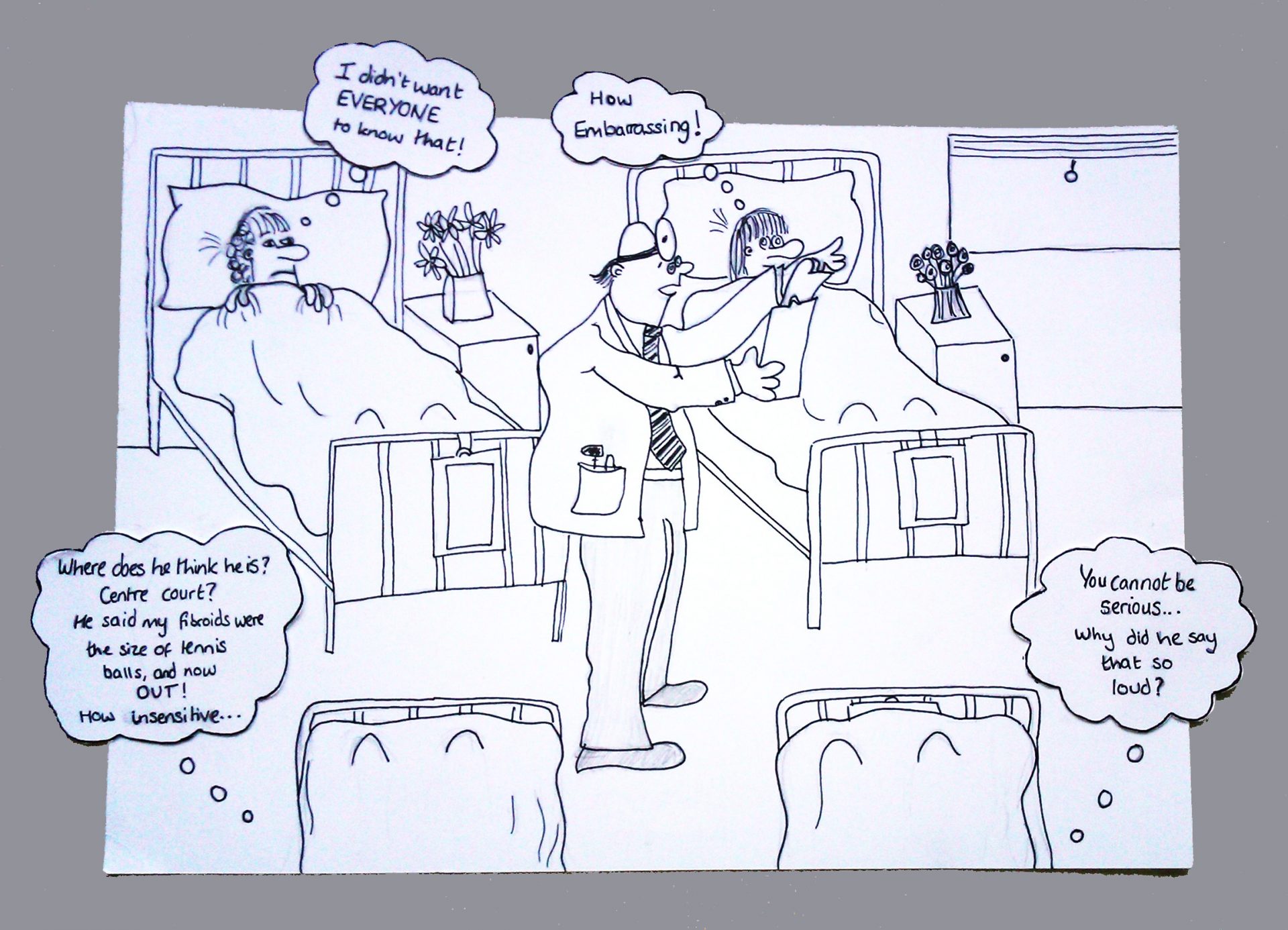If in doubt, call it out!
My drawing was based on a conversation I had with Rachel following her time in hospital. What influenced me most when creating this piece was what Rachel shared about a doctor on ward rounds who had not been discrete and appeared oblivious to the fact that everyone could hear what he was saying. Under the circumstances, Rachel did not want everyone else to know that she had been through an abortion so she was, filled with worry and anxiety when the doctor approached my bed. Thankfully, the doctor did lower his voice to tell her that everything had gone well and Rachel was relieved. She had also seen how embarrassed others on the ward had looked after the doctor had made light of their conditions. I wanted to represent the characters in a cartoon style because very often cartoons, particularly political cartoons, present double meanings. The first is the joke which is funny, usually at someone’s personal expense, but secondly, it often refers to a very serious issue or occurrence. In this case the doctor is cracking jokes about tennis balls and fibroids but is not considering the suffering that patient has experienced. His behaviour, whilst he thinks he is amusing, is raising the anxiety levels of other patients including Rachel. They are wondering what he is going to say to them. Using the cartoon also enabled me to show how his actions were having an effect across the whole ward because there are thought-bubbles from all the patients. I tried to show how there were aspects of the story which I realised could be funny but only at someone’s expense. This also inspired me to call the piece ‘If in doubt call it out!’ which I hope illustrates the inconsiderate behaviour of this medic, the link to the tennis balls ‘joke’, unsporting behaviour and the actions of the doctor ‘calling out’ in the hospital environment. The patients in the cartoon are hiding under their sheets and this is to represent not only how the doctor is embarrassing them but also the break down of the relationship between the doctor and patient. The people in my drawing in contrast are hiding away and do not feel that they have any say in their health care. Only their thoughts can be seen in the speech bubbles, no one will speak out loud. This highlights the failure of the doctor in this case to empathise with his female patients. He has put up a barrier between himself and the patients by not giving them the privacy and dignity they deserve. When a patient is at their most vulnerable in hospital, I believe this is the time that they should be dealt with in the most sensitive and empathetic way as they have placed their trust and confidence in the medical team. I hope people looking at the cartoon realise the seriousness of the message behind it and the responsibility of the doctor to implement the art of medicine.

0 Comments